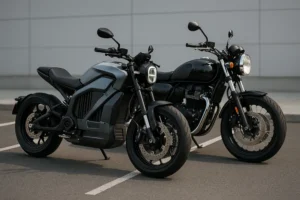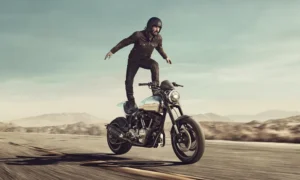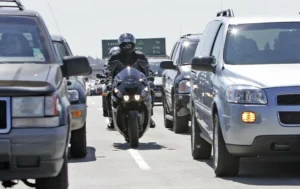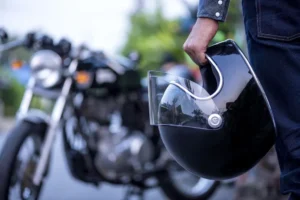There’s nothing quite like the freedom of a cross-country motorcycle ride. The open road, shifting landscapes, and new experiences make it one of the most exhilarating journeys a rider can take. But that freedom comes with responsibility, especially when it comes to understanding the patchwork of motorcycle laws across the United States.
Unlike cars, motorcycles face a wider range of state-specific regulations. What’s legal in one state may be illegal just across the border, and failing to know the rules can lead to fines, insurance complications, or even worse, serious safety risks.
This guide breaks down the key motorcycle laws you need to know before heading out on a cross-country trip — from helmets and headlights to lane usage and noise restrictions.

Helmet Laws: The Most Common Difference
Helmet requirements are one of the most noticeable differences across states.
-
Universal Helmet Law States (18 + D.C.): States like California, New York, and Oregon require every rider and passenger to wear a helmet at all times.
-
Partial Helmet Law States (29): These states typically mandate helmets for riders under 18 or 21. For example, Florida requires helmets for those under 21 but allows older riders to go without if they carry at least $10,000 in medical insurance.
-
No Helmet Law States (3): Illinois, Iowa, and New Hampshire leave helmet use entirely up to riders.
If you’re riding across multiple states, the safest approach is to wear a DOT-approved helmet at all times. That way, you’ll be legal everywhere and protected in case of a crash.
Eye Protection Requirements
Some states require riders to wear goggles or face shields if their motorcycle doesn’t have a windshield. For example:
-
Mandatory Eye Protection: States like Colorado, Kentucky, and Minnesota enforce eye protection rules.
-
Conditional Eye Protection: Some states only require it for younger riders or specific vehicle types.
-
No Requirement: A handful of states don’t address eye protection at all.
This is a detail many riders overlook but can lead to fines or unsafe conditions if ignored.
Headlight Laws
Motorcycle visibility is a big safety issue, which is why many states have headlight use laws:
-
Daytime Headlight Laws: States such as California, Illinois, and New York require headlights to be on at all times, even during the day.
-
No Daytime Requirement: Others only require headlights at night or in low-visibility conditions.
Automatic daytime running lights on most modern motorcycles make this easier, but older bikes may need manual compliance.
Lane Usage: Sharing, Splitting, and Filtering
This is one of the most confusing areas for riders traveling across states.
-
Lane Splitting: Only legal in California, where riders may ride between lanes of traffic under safe conditions.
-
Lane Filtering: Permitted in Arizona, Montana, and Utah under strict rules, usually at low speeds or stopped traffic.
-
Lane Sharing: In most states, two motorcycles may share a single lane side by side, but a car cannot.
If you’re traveling through multiple states, assume lane splitting is not allowed unless you are in California.
Passenger Rules
Each state has its own rules about carrying passengers:
-
Some states require motorcycles to have dedicated passenger seats and footrests.
-
Age restrictions also apply in certain states — for instance, Arkansas requires passengers to be at least 8 years old.
-
Helmets for passengers may be required even if the operator isn’t obligated to wear one (depending on state law).
Noise Restrictions
Loud pipes may be part of motorcycle culture, but states have noise limits.
-
Strict States: California, Massachusetts, and New York enforce decibel restrictions and may require EPA-compliant exhaust systems.
-
Lenient States: Others rarely enforce noise laws, although local ordinances can still apply.
For cross-country rides, it’s best to avoid aftermarket exhausts that may draw unnecessary attention from law enforcement.
Insurance Requirements
Every state has minimum liability insurance requirements for motorcycles, but the amounts vary.
-
Low Minimums: Some states like Florida require minimal coverage.
-
Higher Minimums: States like Alaska and Maine demand much higher liability limits.
Carrying only the minimum may technically keep you legal, but it may not provide enough protection if an accident occurs in another state. Riders planning long trips should consider supplemental medical coverage and uninsured/underinsured motorist protection.
Equipment Rules
States also have rules governing motorcycle equipment, such as:
-
Mirrors: Most states require at least one mirror, some require two.
-
Handlebar Height: Many states limit handlebars to a certain height above the seat (often 15–30 inches).
-
Turn Signals: Not always required, especially on older bikes, but increasingly mandated on modern models.
-
Mufflers: States generally require motorcycles to have working mufflers to prevent excessive noise.
Checking your bike’s compliance before leaving is essential to avoid fines.
Special Laws to Watch Out For
Here are a few unique state laws that often surprise riders:
-
Texas: Riders under 21 must wear helmets unless they complete a safety course and have insurance.
-
Louisiana: Riders must wear helmets with chin straps, visors, or eye protection built-in.
-
Missouri: Recently loosened its universal helmet law but still requires helmets for riders under 26.
-
Hawaii: Helmet use is only required for riders under 18, but all riders must wear protective eyewear.
Tips for Cross-Country Riders
-
Research Your Route – Check each state’s motorcycle laws before departure.
-
Over-Prepare – Carry gear that keeps you compliant everywhere: helmet, eye protection, reflective clothing.
-
Print a Quick Reference Sheet – Having a breakdown of states’ laws on hand can prevent confusion during your ride.
-
Ride Defensively – Even if the law permits something, safety should come first.
Conclusion
A cross-country ride is an unforgettable experience, but staying on the right side of the law requires preparation. From helmets to lane usage, state-by-state motorcycle laws can change dramatically as soon as you cross a border.
By knowing the rules in advance — and by choosing safety even when the law doesn’t require it — you can focus on the best part of riding: the freedom of the open road.





